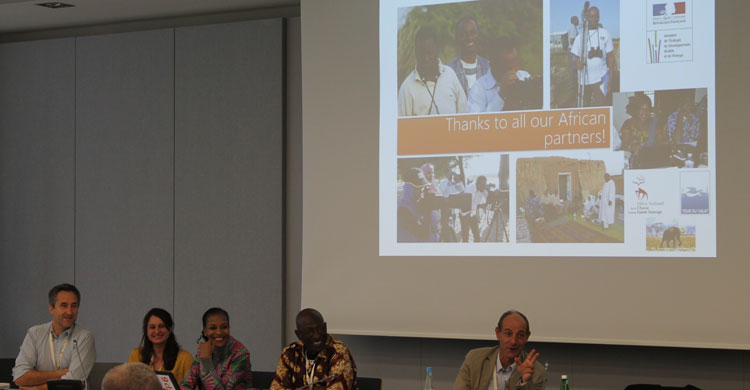Action Plan for Africa: TSU Pays Tribute to the Enthusiasm of its African Partners

© Marie Mevellec
Bonn, 14 November 2015 - The Plan of Action for Africa (POAA) of the Agreement on the Conservation of African-Eurasian Migratory Waterbirds (AEWA) was adopted at the 5th Meeting of the Parties to the Agreement (MOP5, La Rochelle, 2012) as part of the African Initiative. At the same time, a Technical Support Unit (TSU) was created to provide technical support to African countries for implementation. Composed of personnel from the National Parks Directorate of Senegal (DPN), the Tour du Valat and the French Office for Hunting and Wildlife (ONCFS), it was funded these last three years by the French Ministry of Ecology, Sustainable Development and Energy (MEDDE).
As one of its priority objectives, the AEWA Plan of Action for Africa foresees the integration of training kits on waterbirds in the curriculum of the main schools and colleges for wildlife management and conservation in Africa. They are traditionally more focused on large animals. However, they train about a thousand future "wildlife" professionals per year and are therefore a very important staging post for capacity-building for the conservation of waterbirds and wetlands.
The Technical Support Unit organized and facilitated two preparatory workshops for the integration of the WOW project (Wings Over Wetlands) and the new quadrilingual ONCFS educational kits in the curricula of these three schools for wildlife management in Africa: the School for the Training of Wildlife Specialists of Garoua, Cameroon (EFG), the College of African Wildlife Management in Mweka, Tanzania (CAWM), and the Kenya Wildlife Service Training Institute in Naivasha, Kenya (KWSTI). This major breakthrough was sealed by the signing of a Memorandum of Understanding between the three institutions, the TSU of the African initiative of AEWA and the AEWA Secretariat.
The 6th Meeting of the Parties to AEWA (MOP6, Bonn, 9-14 November 2015) noted with satisfaction the significant progress made on one of the priority actions of the Action Plan for Africa, which constitutes a decisive step in capacity-building in Africa.
During a side event held on 11 November 2015 the three representatives of these schools, who had been invited to MOP6 by the Secretariat of AEWA and the TSU, presented their vision of how training modules on migratory waterbirds could be integrated into their university courses.
Representatives of the TSU meanwhile, during another side event held on 12 November dedicated to their current and future projects, stressed that their action covers only one of the objectives of the Plan of Action for Africa. For the period 2016-2019, new projects have been planned to meet objective 2 of that Action Plan. But already, the lack of funding is giving rise to concerns and visions developed for the next triennium are highly dependent on possible synergies with other projects.
Indeed, Mr Szabolcs Nagy, the editor of the latest report on the state of conservation of migratory birds, underlines the difficulties related to the lack of funding of the Plan of Action for Africa: "The donor countries’ support for the implementation of the POAA is quite disappointing. Only a handful of countries have contributed to this, although it was in the best interest of the EU and all its Member States to invest heavily in the POAA. This would have protected their own investments in national conservation efforts.”
Despite these difficulties, the TSU warmly thanked all African partners for their enthusiasm and paid tribute to them, pointing out how it is difficult to count waterbirds in Africa given the limited means and resources available.
Last updated on 19 November 2015


